20200214 Report Fashion and Social Change by Barbara Joyce
Fashion and Social Change
On St. Valentine’s day 2020, the members and visitors were enthralled by a learned and humorous talk with many illustrations on Fashion and Social Change given by Barbara Joyce with a history of men’s underwear from ancient times, alongside women’s underwear from the 19th century, and men’s hats and Victorian mourning clothes.
Etiquette, social peer pressure, wealth display, non-practicality but figure display, changing fortunes for the rising middle class and beliefs were all reflected in clothes and they changed as society changed. Our record of those clothes allows us to interpret social norms, class distinction, and the ‘expensive’ becoming less expensive with industrial aided clothing manufacture rather than hand sewn and stitched slowly and expensively and flowing down the social income classes as the mass manufacture of clothes made them cheaper.
Brabara Joyce's talk started with the 'socially peer group' enforced Victorian mourning periods and etiquette, followed by underwear and finished with men's hats and why they are no longer universally worn nowadays.
Your writer has added notes on present day loincloths as worn in Japan and Ötzi the iceman's loincloth; and on the "Lengberg Castle" 15th century.underwear discovery.
Victorian Mourning.
Mourning.
The talk explained, illustrated, and gave details of the formal and informal societal enforced pressures that reflected society in the clothes of the Victorian period and how it changed over time. It much enriched certain manufacturers (of crape: Courtaulds) and retailers.


Catherine de Medici as widow c 1560s Mary Queen of Scots in deuil blanc [White Mourning] 1559
Today, no special dress or behaviour is obligatory for those in mourning in the general population, although ethnic and religious faiths have specific rituals, and black is typically worn at English funerals although there is a tendancy to request mourners to wear bright cloths to celebrate the life of the dead person nowadays. Traditionally, however, there were strict social rules to be observed.
By the 19th century, mourning behaviour in England had developed into a complex set of rules, particularly among the upper classes. For women, the customs involved wearing heavy, concealing, black clothing, and the use of heavy veils of black crape. The entire ensemble was colloquially known as "widow's weeds" (from the Old English wǣd, meaning "garment").
In Victorian times, these were carried to extremes, partly by peer pressure, partly by increased wealth in the middle classes (as mourning clothes were expensive and displayed your wealth and ability to buy at short notice), following the behaviour of the upper class who followed the royal behaviour of extended mourning as Queen Victoria wore mourning for the rest of her life after prince Albert's death.
Black Mourning and Etiquette.
The mourning etiquette was strict and specific periods of mourning were observed, which greatly effected ladies and their ability to interact with society.
Full Mourning for at least a year. (However this could be 2 to 4 years or remaining lifetime).Very formal black clothes.
Half Mourning for next six months. For half mourning, muted colours such as lilac, grey and lavender grey could be used.
Photo
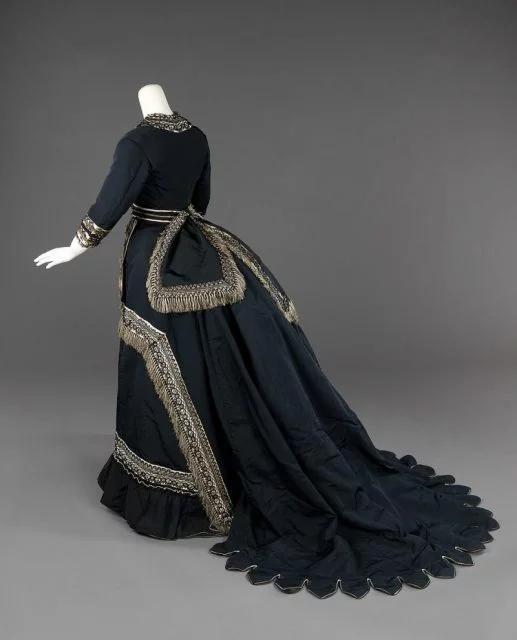
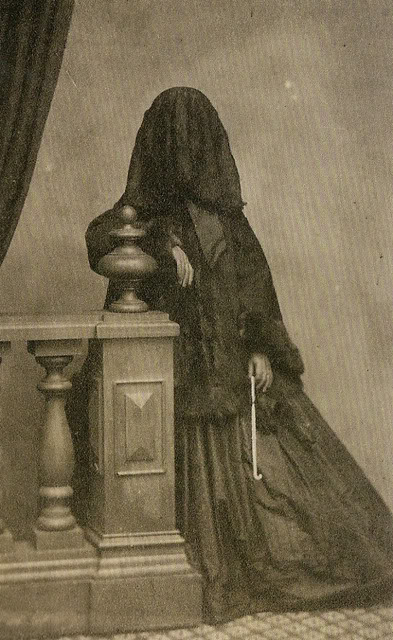
Back View mourning dress met 44 147 1a b threequarter back Early Victorian Lady in Mourning Dress
White mourning.
In other countries (Netherlands, Belgium, France)and in previous times, white was the colour of mourning. The colour of deepest mourning among medieval European queens was white. Examples Mary Queen of Scots, and in 2004, the four daughters of Queen Juliana of the Netherlands all wore white to their mother's funeral. In 1993, the Spanish-born Queen Fabiola introduced it in Belgium for the funeral of her husband, King Baudouin of Belgium.
The custom for the Queens of France to wear "deuil blanc" [white mourning] was the origin of the White Wardrobe created in 1938 by Norman Hartnell for Queen Elizabeth (later called the Queen Mother). She was required to make a State visit to France while in mourning for her mother.
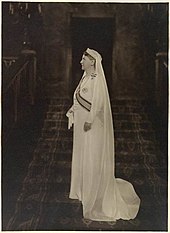
Queen Wilhelmina of the Netherlands in white mourning after the death of husband in 1934
Relatives.
Friends, acquaintances, and employees wore mourning to a greater or lesser degree depending on their relationship to the deceased. Mourning was worn for six months for a sibling. Parents would wear mourning for a child for "as long as they feel so disposed". No lady or gentleman in mourning was supposed to attend social events while in deep mourning. In general, servants wore black armbands when there had been a death in the household. However, amongst polite company the wearing of a simple black armband was seen as appropriate only for military men, or others compelled to wear uniform in the course of their duties.
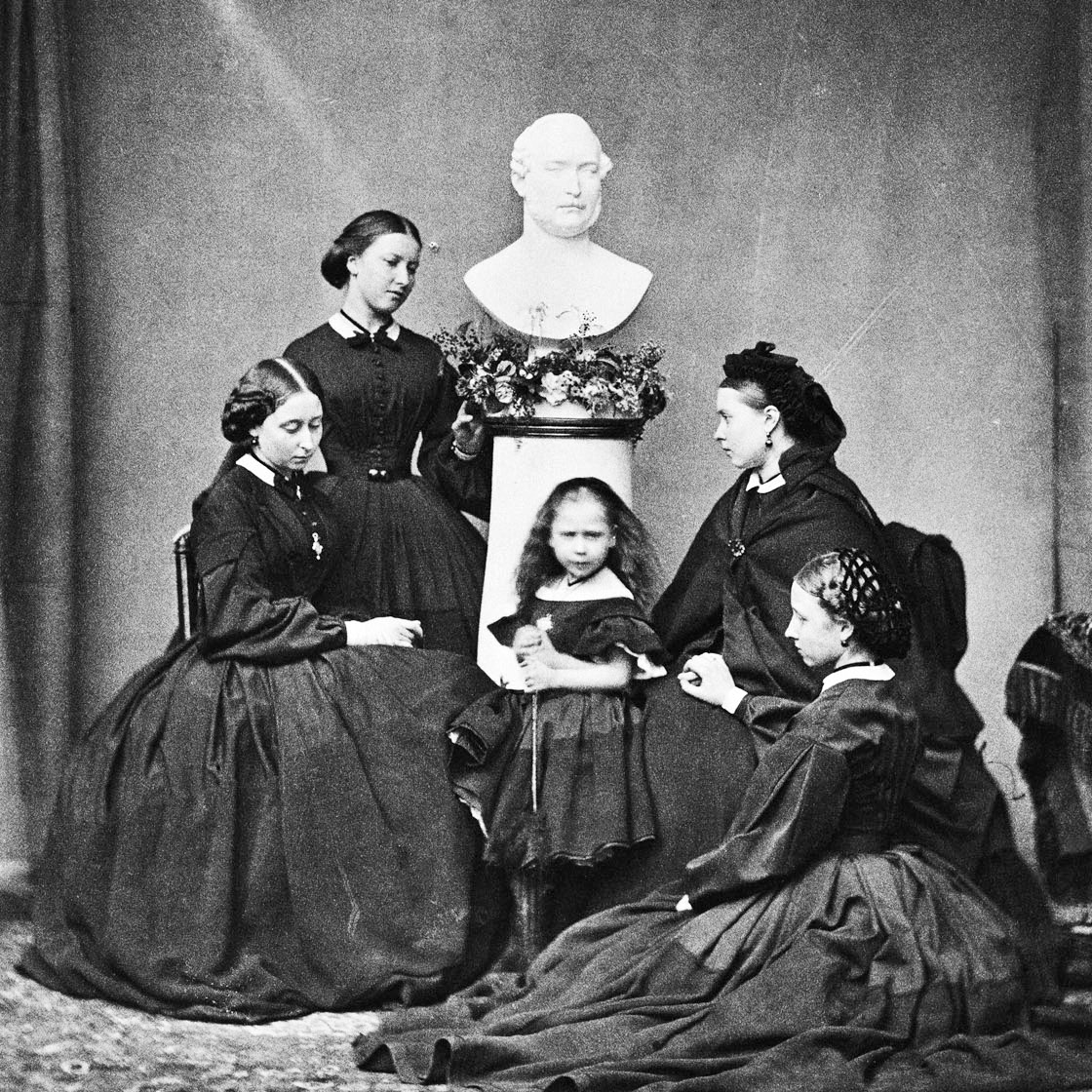
Daughters of Albert with statue
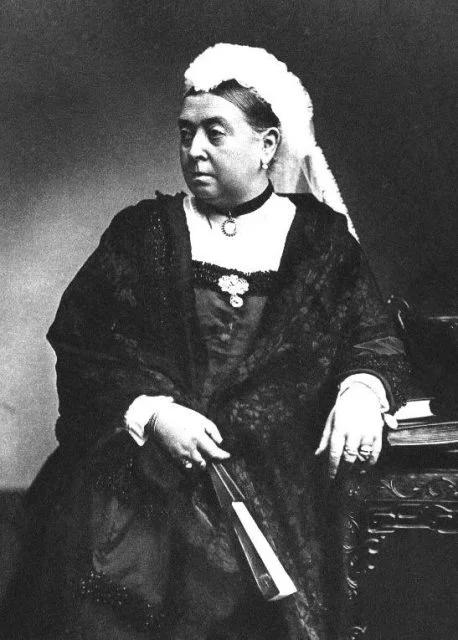
Queen Victoria in 1890
Men
Men were expected to wear mourning suits of black frock coats with matching trousers and waistcoats.
An industry arose for the supply of mourning clothes, jewellery, and funeral appurtenances and carriages to those who could afford it.
Averts.
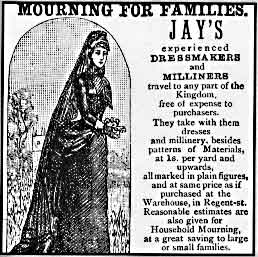
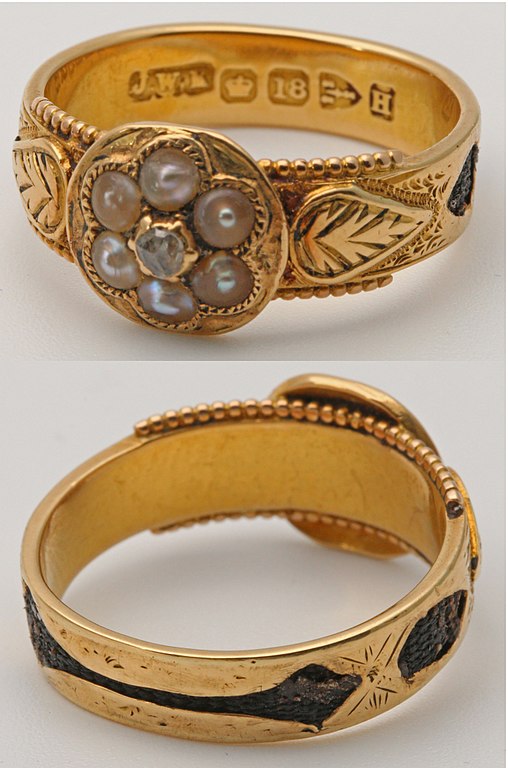
Warehouse Advert for Quick Supply. Mourning ring photo Charles J Sharp
Links:
https://www.thevintagenews.com/2016/05/28/39293-2/
https://en.wikipedia.org/wiki/Mourning#dress
https://en.wikipedia.org/wiki/Mourning
Underwear.
Male underwear has a longer known history than female underwear.
Male underwear.
Loincloths (Text partly from Wikipedia and other sources)
The first known underwear dates back almost 7000 years, when prehistoric man used leather to cover and protect his loins. In many centuries little has changed.
Men’s under wear was for protection, warmth, hygiene.
The ancient Egyptians sometimes wore loincloths. The Romans also wore underwear. Both Roman men and women wore a loincloth or shorts called subligaculum. Women also wore a band of cloth or leather around their chest called a strophium. Loinclothes came in all shapes and sizes depending on local cultural influence.
A belt holding a simple strip of leather is the simplest loincloth, while when made in cloth as a shield shape with side tags it later became the Minoan or Egyptian type.
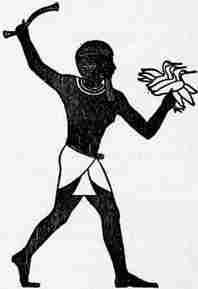
Egyptian loincloth
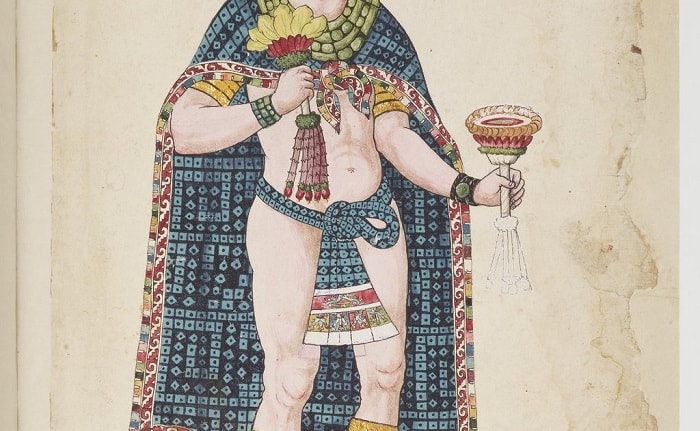
Meso loincloth men's underwear Middle America
The simplest definition of a loincloth is a piece of material that is usually wrapped between the legs and around the waist. Depending on the civilisation and the materials available, ancient men would make this garment out of either leather or such fabric as was available such as linen.
How old is the loincloth?.
Archaeologists have discovered one, made of leather, that they have dated to be about 7,000 years old, while Ötzi the iceman, a man who lived between 3400 and 3100 BCE wore a loin cloth of sheepskin.
Ötzi
Ötzi was found on 19 September 1991 by two German tourists, at an elevation of 3,210 metres (10,530 ft) on the east ridge of the Fineilspitze in the Ötztal Alps on the Austrian–Italian border.
Ötzi wore a cloak made of woven grass and a coat, a belt, a pair of leggings, a loincloth and shoes, all made of leather of different skins. The leather loincloth and hide coat were made from skins.
Ötzi wore a loincloth made from narrow strips of sheep hide stitched together. It was originally a 100 x 33 cm piece of hide worn between the legs and fastened with the belt and presumably worn by pulling it between the legs and fastening it at the waist with a belt. (per South Tyrol Museum of Archaeology)
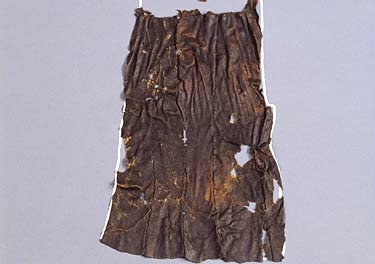
Otzi's loincloth.
Ötzi wore a loincloth made from narrow strips of sheep hide stitched together. It was originally a 100 x 33 cm piece of hide worn between the legs and fastened with the belt.
References:
South Tyrol Museum of Archaeology
Via Museo/Museumstraße 43; 39100 Bolzano/Bozen; South Tyrol - Italy
Visitor Services & Information email mailto:
Telephone +39 0471 320 100 (Monday-Friday: 9 am to 1 pm)
Influence of Ötzi on present culture.
Songs made at times of Otzi's discovery.
Iceman in song by the Beatles. [A song about the frozen mummy they found in the Alps, not the guy down the street selling crystal meth (original instrumental)]
https://www.youtube.com/watch?v=oLD6VW3XlUc
Loincloths were worn by many cultures.
Basically everyone in ancient history, as noted above, and the men in ancient Hawaii, in Egypt [including the Egyptian King Tutankhamun] it was made from woven materials, commonly cotton and flax, kept in place with a belt, (the lower classes and slaves were almost naked, so technically this loincloth was often “outerwear”) in Greece philosophers like Plato, in Rome these included the leaders of Ancient Rome such as Augustus.
Even as early as the loincloth, fashion was considered. Men wore linen, leather or sometimes even wool, but if you were important, the more expensive undergarment let the rest of society know you were from a higher class.
Although most cultures no longer wear loincloths, some tropical societies and Japan still embrace this form of underwear (or as outerwear for festivals in Japan!) for men.
Modern Loincloths.
As your writer has experienced, it is still the fashionable clothing for many rituals at temples in Japan (Japanese loincloths being called 'Fundoshi') and is used as the symbol on the side of the lorries of Japanese carriers. Fundoshi are sold by high class stores (& Amazon) in many varieties.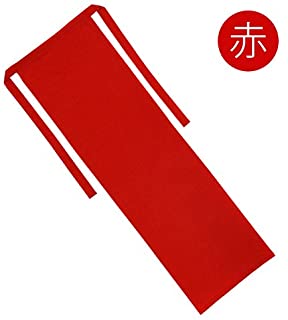
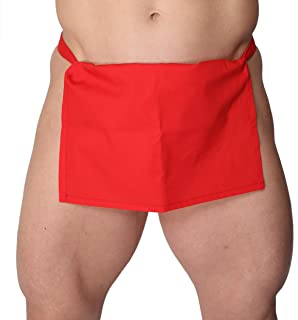
Fundoshi Advert Fundoshi as worn.
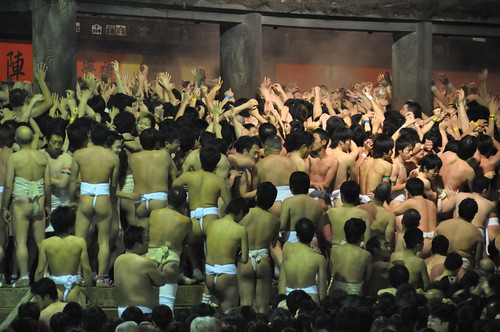
Fundoshi clad men in ritual
The naked festival at Saidaiji in Okayama.
Participants receiving purification by water at the naked festival at Saidaiji in Okayama. Each year on Third Saturday in February
Significance Celebrates the blessings of a bountiful harvest and all manner of prosperity and fertility
The celebration at Konomiya shrine. Video on YouTube.
https://www.youtube.com/watch?v=4pAQ8RvkNAE
Japan's Naked Festival 日本のはだか祭!(愛知) “Shin Ototo” (“The New Ototo” for the temple)
Video Mar 4, 2015 by Rachel and Jun
"This is Japan's Naked Festival, or Hadaka Matsuri. There are Naked Festivals all across Japan, but each one is celebrated differently. This one is the celebration at Konomiya shrine, which revolves around a man called the shin otoko ["the New Otoko"]
Links:
Shrines webpage is http://www.konomiya.or.jp/hadakamatsuri
Rachel and Jim's blog with much more on this festival,
http://www.rachelandjun.com/2015/03/r-hadaka-matsuri-japans-naked-festival.html
Loincloths lasted until the middle ages when looser clothing became the fashion.
Braies.
In the Middle Ages, western men's underwear became looser fitting. The loincloth was replaced by loose, trouser-like clothing called braies, which the wearer stepped into and then laced or tied around the waist and legs at about mid-calf.
Wealthier men often wore chausses (stockings) as well, which only covered the legs.
Chausses were a medieval tight-fitting garment worn by men to cover the legs and feet and sometimes the body below the waist
Braies (or rather braccae) were a type of trouser worn by Celtic and Germanic tribes in antiquity and by Europeans subsequently into the Middle Ages. In the later Middle Ages they were used mostly as undergarments.
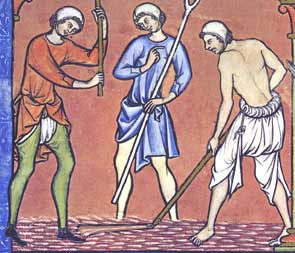
Braies By Unknown Created between 1244 and 1254 date Public Domain
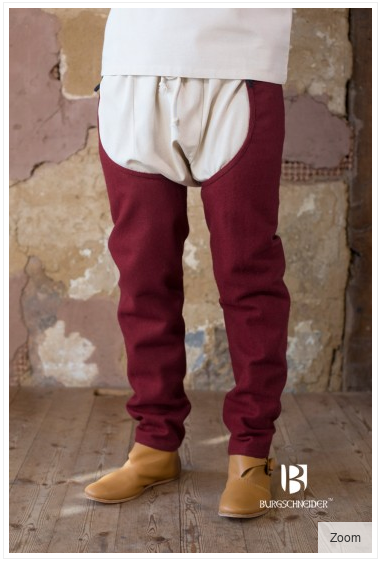
Chausses Braies by re enactment supply company Burgschneider
By the time of the Renaissance, braies had become shorter to accommodate longer styles of chausses. Chausses were also giving way to form-fitting hose, which covered the legs and feet. Fifteenth-century hose were often particoloured, with each leg in a different-coloured fabric or even more than one colour on a leg. However, many types of braies, chausses and hose were not always intended to be covered up by other clothing, so they were accepted visual underwear.
Braies were usually fitted with a front flap that was buttoned or tied closed. This codpiece allowed men to urinate without having to remove the braies completely.
Codpieces were also worn with hose when very short doublets like garments tied together in the front and worn under other clothing were in fashion, as early forms of hose were open at the crotch. Henry VIII of England began padding his codpiece, which caused a spiralling trend of larger and larger codpieces that only ended by the end of the 16th century.
Modern Studies.
PhD on codpieces. Cambridge. Only briefly in vogue, the codpiece has left a rich legacy in art, literature and – most recently – in televised costume drama. In focusing her attention on this ostentatious male accessory, PhD candidate Victoria Bartels has developed some new ideas about its evolution (and demise) as a symbol of virility.
A form of underpant(s) returned during the 15th and 16th centuries, when men’s leg-hose were bifurcated (split in two)and a cod piece added for comfortable urination and display
Photo ex https://www.cam.ac.uk/research/features/what-goes-up-must-come-down-a-brief-history-of-the-codpiece
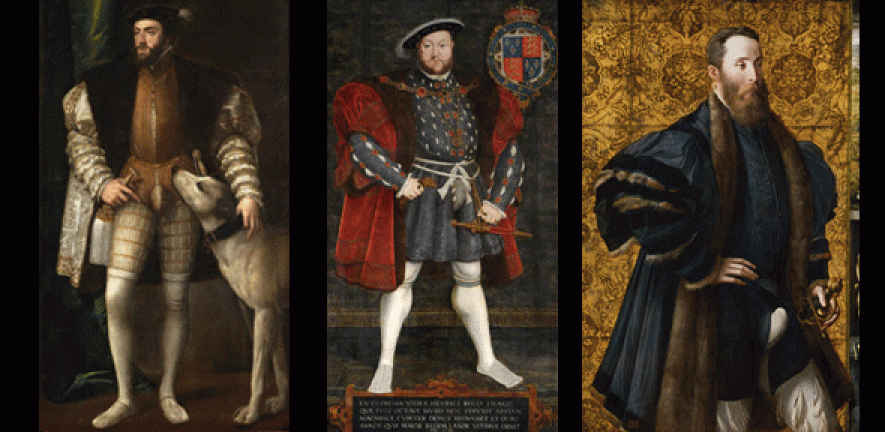
Left - portrait of Charles V; centre - portrait of Henry VIII; right - portrait of Pedro Maria Rossi
Credits: Left - Wikimedia Commons; centre - The Master and Fellows of Trinity College; right - Museo del Prado, Madrid
In the early to mid 19th century, both men and women wore bifurcated drawers with separate legs—a loose type of knee-length trousers suspended from the waist. This simple style of underpant(s) made relieving oneself more manageable, especially if several layers of petticoats or breeches were worn.
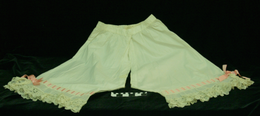
Wikipedia image of female pants PNG
In 1882, dress reformer Dr Gustave Jaeger argued that wearing natural woollen fibres next to the skin would help disperse bodily poisons by allowing the skin to breathe. Dr Jaeger also felt the elasticized qualities of knitted garments were more likely to promote exercise.
Also in the 19th century, the popularity of long-legged trousers for men led to a change in men’s underpants, with hose (long johns) extending to the ankle. These were made of silk for the wealthy and flannel, or later wool, for the masses.
Latex, a rubber yarn introduced in 1930, allowed stretch undergarments to become more figure-hugging. These eventually evolved into underpant styles similar to those worn today. In 1938, after the invention of the synthetic fibre nylon, lightweight easy-to-launder underwear started to appear. Easy laundering became a great boon for families and the ability to easily wash and dry underwear helped general health. However slow drying cotton underwear as trunks was the rule for the vast armies of the 1940s.
Shorter, crotch-length underpants or trunks for men appeared after 1945. In 1959, a new man-made elastomeric fibre called Lycra™ was invented. Combined with cotton or nylon, it was strong, stretchable and recovered well. The result was more body-conscious underpants for men.
In the more permissive 1960s, underpants became briefer for both sexes and the Y-front was largely eliminated from men’s underwear. By the 1970s, underpants were virtually seamless.
photo
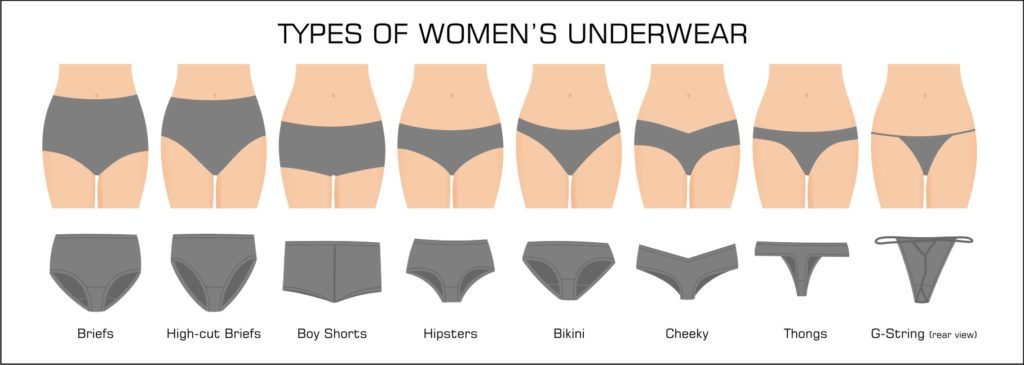
Type of womans underwear Knickers 2019
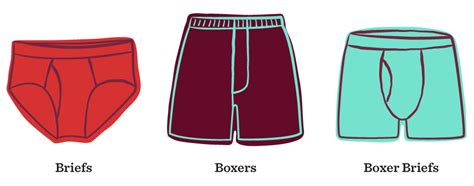
Male underwear circa 2017
Elastic.
It was the invention of elastic that revolutionised underclothing.
Elastic Yarn Quote from:
HowStuffWorks Science Innovation Everyday Innovations : How Elastic Works by William Harris
Link: https://science.howstuffworks.com/innovation/everyday-innovations/elastic1.htm
Elastic is so ubiquitous today that we barely give it a second thought. Like paper clips and zippers, we simply expect it to work without ever wondering what it is, how it's made or what people did before it existed. Take the elastic waistband. In fact, fetch a pair of underwear (preferably clean) from your bedroom and give them a good once-over. You'll notice the familiar stretch of the band followed by the satisfying springing action as it returns to its original shape. It's like a rubber band, but not. When you put your hands on a rubber band, you touch, well, raw rubber. When you do the same with an elastic waistband, you touch fabric.
Making elastic looked no different than making other woven fabrics. It required a loom, which was a machine that allowed lengthwise threads known as the warp to be interlaced with widthwise threads known as the weft. In normal woven fabric, those threads would consist of yarn derived from natural fibres, such as cotton or wool. But in elastic, strands of yarn were laced together with strands of natural or synthetic rubber.
Today, automated looms handle the weaving process, though the results are the same: a stretchy fabric that can be incorporated into an array of garments. The elastic waistbands found in boxers and briefs make a convenient example. Cut into any of these stretchable items, and you'll find one common element: fine rubber threads or thick rubber bands (Bungee Cords) just like the rubber bands you use in your office or kitchen.

Warp / Weft Diagram
The Body-Hugging revolution
New 'man made' materials re-revolutionised clothing again in the 1960s-1980s.
Underwear and outerwear re-revolution with artificial fibres from 1960s onwards.
"Spandex" (USA), "Lycra" (Europe) or elastane is a synthetic fibre known for its exceptional elasticity.
This is a polyether-polyuria copolymer that was invented in 1958 by chemist Joseph Shivers at DuPont's Benger Laboratory in Waynesboro, Virginia, USA to satisfy a demand for a better ‘elastic’ fibre for female clothing and to ensure their world markets.
Link: https://en.wikipedia.org/wiki/Spandex
photo
Female Underwear. Knickers.
Knickers in Europe and USA were not commonly worn until the time of the crinolene as most women up to then (supposedly) wore no lower body underwear.
(Upper body underwear garments were usual, some doubling as outerwear).
Link:
https://fyeahhistory.com/2017/06/10/knickerless-and-fancy-free-a-history-of-ladies-underwear/
This is a UK site with quick review of development of female underwear.
A brief history of ladies underwear (and why it’s the worst!)
fyeahhistory, By fyeahhistory June 10, 2017
“It’s a brave woman who lives her life eternally sans knickers (or panties for you Americans) but until very recently it was the norm.
Though men throughout history wore underwear (Charles ll was a fan of a silken boxer short FYI) it was considered improper for a lady to have anything between her legs.”
In the early to mid 19th century, women wore bifurcated drawers with separate legs — a loose type of knee-length trousers suspended from the waist. This simple style of underpant made relieving oneself more manageable, especially if several layers of petticoats or breeches were worn. Closed crotched underpants for women (pantalettes) emerged in the mid to late 19th century.
For women in the early 1900s, getting dressed involved multiple layers of undergarments including chemise and drawers followed by a constrictive corset.
During the first world war more women undertook physical labour in factories, mines and farms, and thus needed utilitarian garments. The silhouette of outerwear such as loose trousers and boiler suits paved the way for knickers, which women began wearing from around 1916.
Underwear has now circa 2020 become much more form-fitting.
However knickers are not a 'new idea'. There are historical records of earlier knickers from recent discoveries and archaeolgical records.
Old knickers.
It was thought that knickers didn’t make an appearance until the late 18th century.
Bras were thought to be an even more modern invention, not appearing until around 100 years ago.
Link to an article showing very old styles of female underwear
https://www.dailymail.co.uk/femail/article-2174568/Austrian-dates-bras-15th-century-The-scraps-lace-castle-vault.html
"Discovered in a castle vault, the scraps of lace that show lingerie was all the rage 500 years ago. By Dalya Alberge 22:17, 19 July 2012"
It is hardly racy by today’s standards but this lingerie has certainly shocked historians.
These lace and linen undergarments date back to hundreds of years before women’s underwear was thought to exist. They had lain hidden in a vault beneath the floorboards of the Austrian castle "Lengberg Castle" in East Tyrol since the 15th century.
Despite their state of decay, the knickers bear more than a passing resemblance to the string bikini briefs popular today, while the bra has the fitted cups and delicate straps of its modern-day counterparts.
Hilary Davidson, fashion curator at the Museum of London, commented on the "Lengberg Castle" discovery ‘this totally rewrites’ fashion history, adding: ‘Nothing like this has ever come up before.’
She believes it is ‘entirely probable’ that something similar was worn by Britain’s medieval women.
‘These finds are a very exciting insight into the way people dressed in the Middle Ages.'
‘It’s rare that everyday garments of any kind survive from this period, let alone underwear.’
The haul included four bras and two pairs of pants. Two of the bras resemble modern counterparts but the others are described rather bluntly as ‘shirts with bags’.
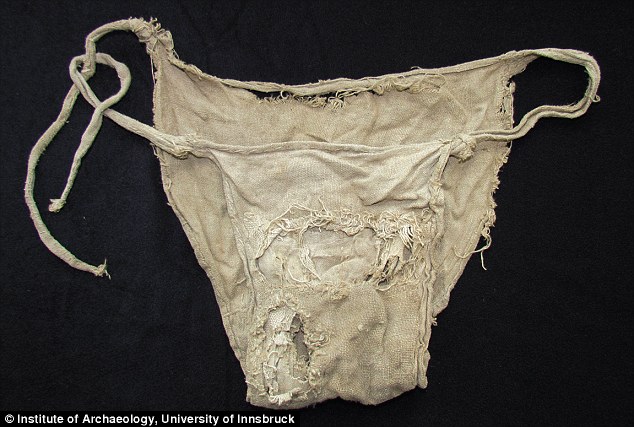
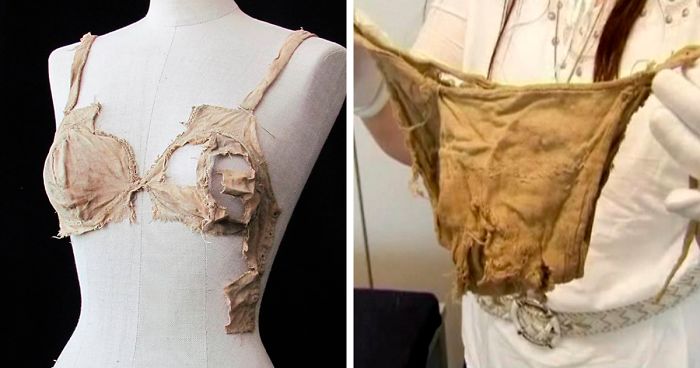
Bra and knickers from "Lengberg Castle" discovery.
Links to "Lengberg Castle" discovery.
German Innsbruck website
http://www.eyneburg.eu/Forum/viewtopic.php?t=4695
and
Heute von der Universität Innsbruck:
http://www.uibk.ac.at/ipoint/news/2012/buestenhalter-aus-dem-mittelalter.html.de
This is the best article, with many photographs, but open it in Google Chrome with Google Translate to read in English Language.
Female sports 'underwear'/'outerwear' of bra / knickers in earlier times
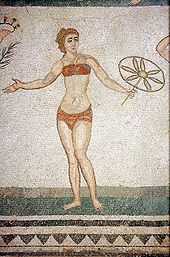
Roman female at sport
Corsets.
These were designed to enforce an 'idea' of the then current mode of fashion, but were objected to by medical practidioners.
Website with interesting differences explained. Link:
http://thedreamstress.com/2013/08/terminology-whats-the-difference-between-stays-jumps-a-corsets/
This website has many images and explains 'type' differences and purpose.
Some photos.
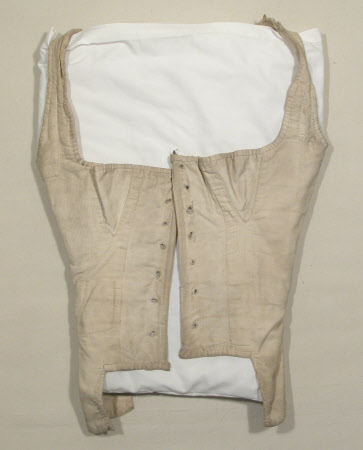
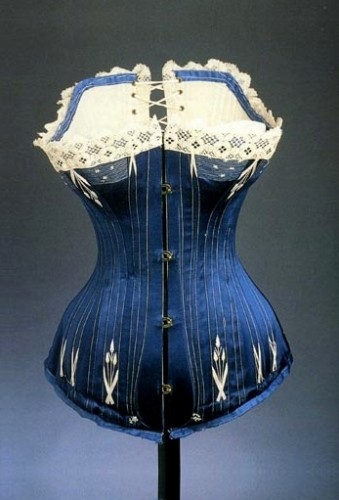
LEFT: Corset Bodice 1800 1820 cotton National Trust Inventory Number 13501272
RIGHT: Corset in blue silk circa 1890
Modern figure support.
Modern 'lycra'/'spandex' garments are a softer method of support to posture without distorting the female body.
With "sports bras" greatly easing the problems of female athletes in many sports.

US women relay team
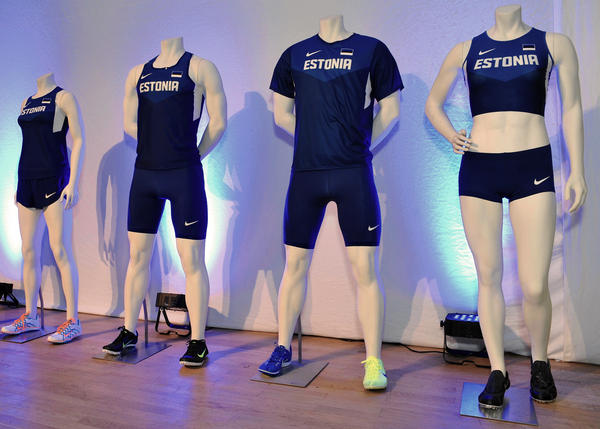
Estonia athletic costume
Men's Hats.
Hats
The speaker asked the important questions "What was the purpose of hats?" and "why has hat wearing declined?" and gave some thoughts to our group and its visitors.
Protection and Status.
Hats and headgear provide protection from the elements, imply social status, or can identify the wearer's group affiliation or career. Even in today's hat-optional culture, we mentally place a crown on the head of a king or a beret on the head of an artist.
Until the late 20th century, hats or head coverings were an essential aspect of a man's wardrobe. From simple close-fitting caps (coifs) to elaborations of folds, decorations, and fine materials, hats declared a man's place in the world. In Europe during the Middle Ages and Renaissance, a man's occupation, religion, and status could be immediately understood by his hat. In some cases, the law mandated the wearing of certain head coverings. Hat styles changed as society and technology advanced.
Today, the wearing of hats in Western culture has almost ceased. Where once every businessman wore a hat with his suit, this is no longer the case. We may see knit caps worn in winter or baseball caps in warmer weather. Hoods attached to sweat jackets appear in urban settings. The occasional Hamburg may show up on a man wearing an overcoat. Flat caps with peaks are a convenient and attractive style for older men.
Hard Hats, Crash Helmets and Cycling Helmets however are on the increase and take us back to a hat's primary purpose of protection.
But to wear a hat or not is in non dangerous situations a choice. In the past, however, hats played a much more important role in a man's wardrobe.
Hats are the ultimate symbol of social change over a few decades.
Why did formal hats decline.
(Protective Hard Hats are now mandatory for many occupations, these are increasing)
Hat-wearing was at its peak from the late 19th Century until the end of the 1920s, when the practise began to decline. Nobody, however, has pinpointed one sole reason why this happened, but there are several key things are that are strongly believed to have contributed.
The most popular attributed cause is the rise of closed cars and other transportation. As covered cars became more popular, the necessity for a hat diminished. With low roofs meaning you couldn’t wear a hat while driving and generally had no need to cover your head anyway, personal transport often negated the need for headwear as you were no longer walking in the open air subject to rain, snow and wind blasts.
Men's Hats in the 19th Century
ex website https://bellatory.com/fashion-accessories/Clothing-History-Mens-Hats-and-Headgear
The 19th century ushered in a classic new look for men that featured simple lines and elegantly cut suits. Flamboyance gave way to moral sobriety and the excess of status became a thing of the past. Egalitarianism was the new style, though class distinctions remained obvious by the cut of a man's clothing and the materials used in production.
Increased production of the Industrial Revolution offered more affordable garments, accessories, and headgear to the growing middle class.
The black silk topper of 1790s French design became the iconic emblem of conservative capitalism. With various tweaks including height and width of the crown, the top hat reigned supreme during the 1800s. Made of stiffened fabric, a top hat was then covered with a silk plush, then brushed until it was smooth and shining. Mercury used in the process sometimes poisoned hat makers, hence the phrase, "mad as a hatter".
The end of the century introduced a collapsible top hat which could be flattened then sprung back with a flick of the wrist.
(CLHG Writer’s edit: Still in use in the UK House of Commons, as a hat must be worn to ask some questions.)
The bowler or derby hat developed mid century became an instant classic and remains an icon of the English to this day. Edward Coke had the first example made to be used as protective gear. But John and William Bowler introduced the mass produced hat designed for young British men. The bowler was simple, practical, and tough.
Link
https://bellatory.com/fashion-accessories/Clothing-History-Mens-Hats-and-Headgear
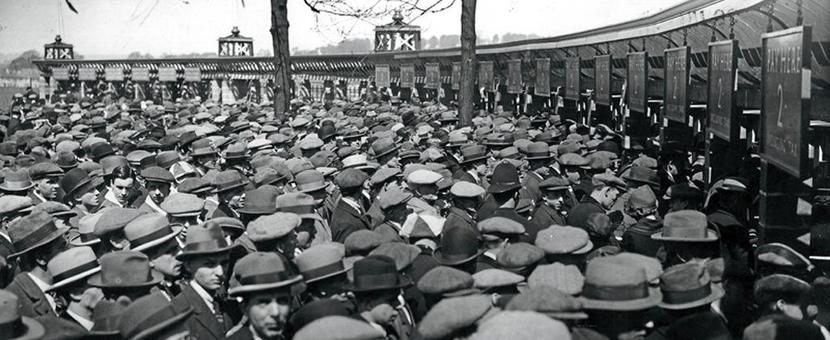
Typical Hats
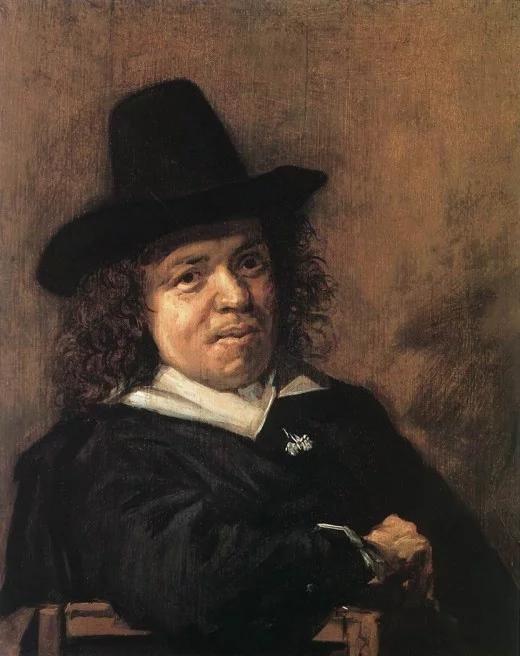
Capotain circa 1655Source Painting by Frans Hals wikimedia commons Public Domain
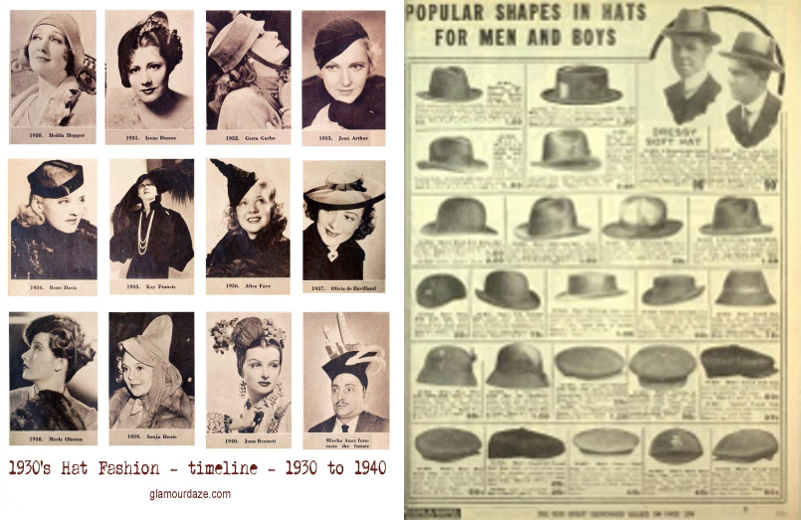
Variety-of-Hats8 Ladies and Men
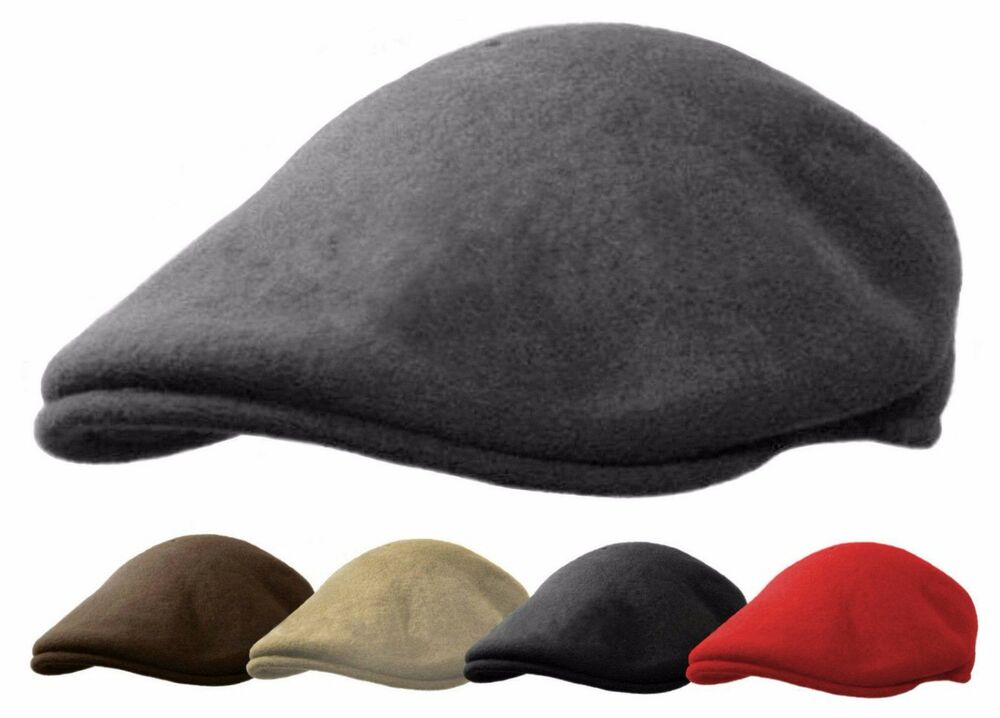
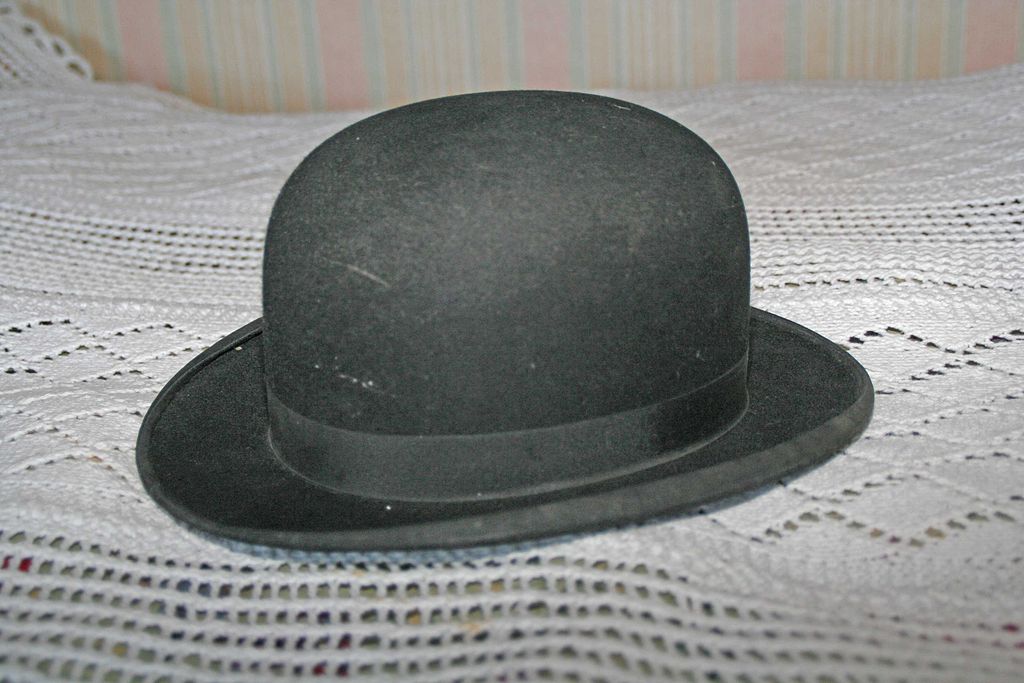
Flat caps. Bowler


Beenie hat Protective Hard Hat and sunscreen cloth
Thanks.
The group and its visitors thanks the speaker for a most interesting and enjoyable talk.
